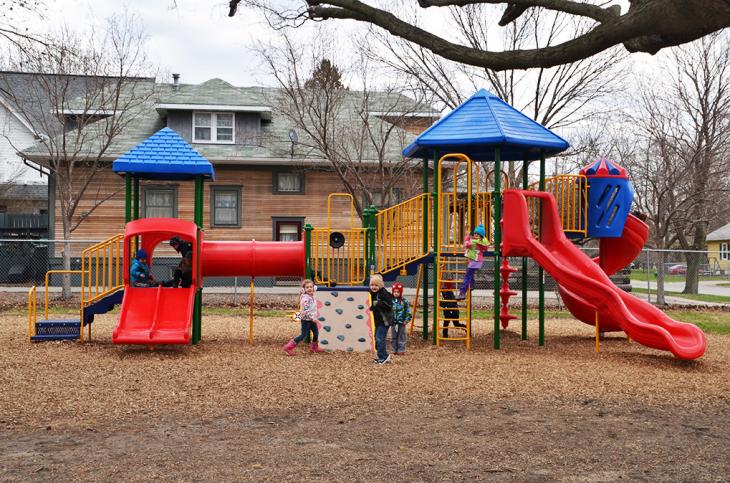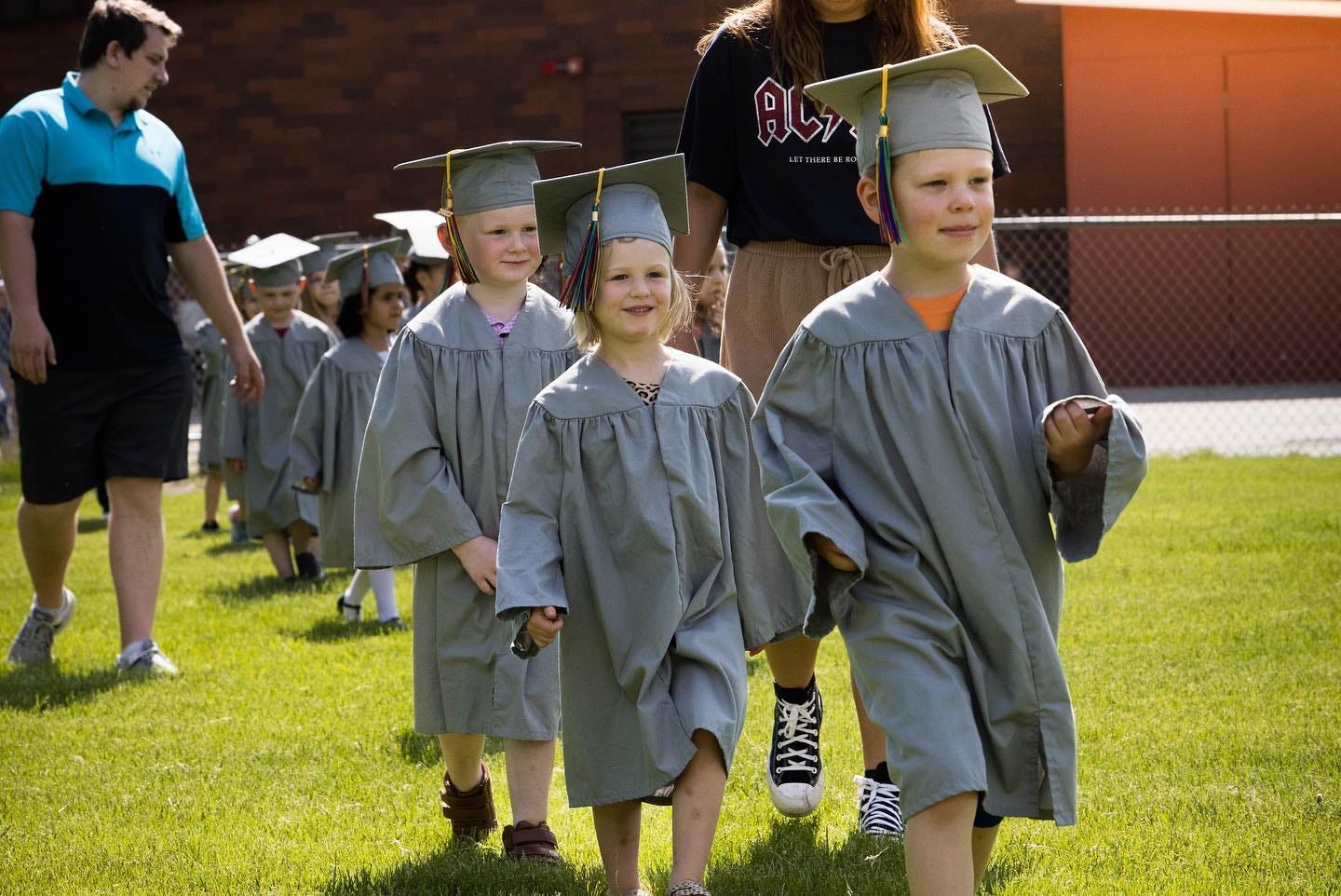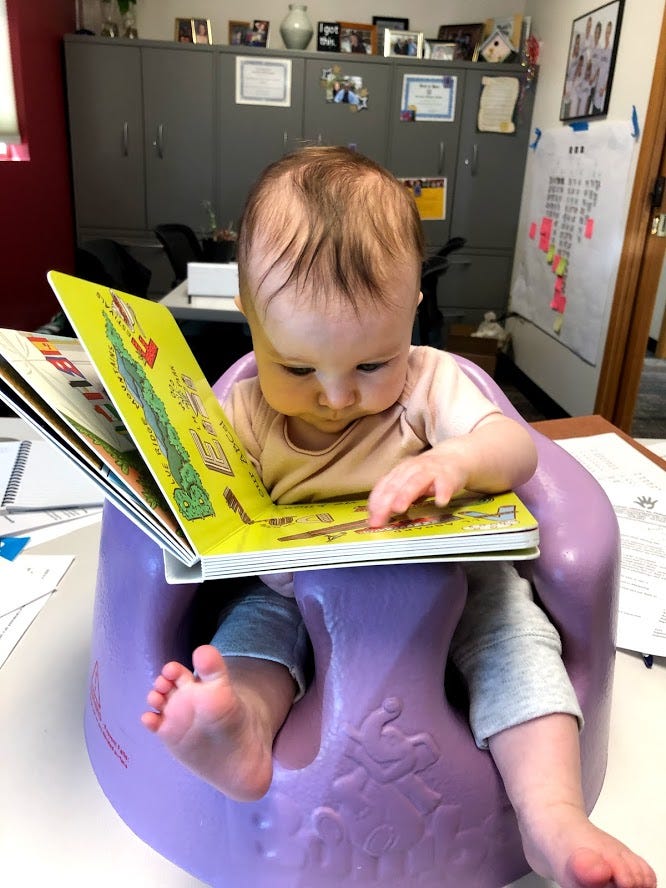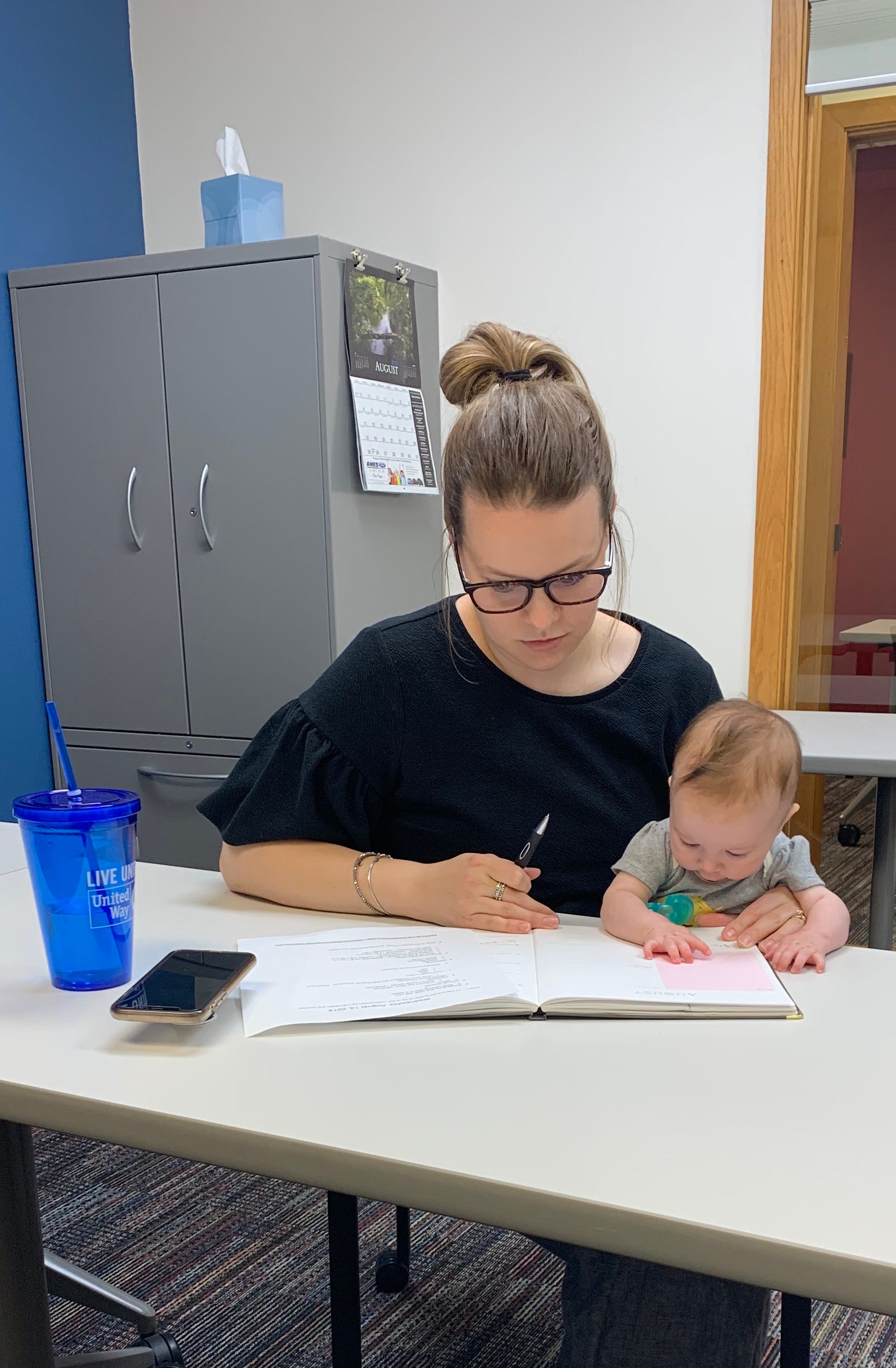For Alyssa Noble, a kid's building block is more than just a piece of wood.
At a child care center in Cedar Rapids, she watches how a simple activity like stacking those blocks can strengthen a toddler's coordination and motor skills. Deciding what to build, their growing minds cultivate imagination and creativity; and, doing so in a group, they develop social skills like cooperation and friendship.
"I don't think a lot of people realize just how much of a foundation is being built in the early childhood years that's going to be carried on later to the kids' lives," Noble said. "They're learning all these skills: emotional, social. They're getting all the building blocks in this early time."
By age 3, 80% of the human brain structure has been developed. Many child care workers like Noble have made a commitment to a job they find rewarding, recognizing it's about far more than just facilitating playtime — despite the drawbacks.
The most prevalent among them? Low pay and high turnover.
In Iowa, those who are paid to work with children in places like child care facilities earn an average annual income of $22,320 and an hourly wage of $10.73, 2021 federal data shows.
That makes child care the third-lowest-paid profession statewide after locker room attendants and lifeguards. Iowa's pay also trails the nationwide rates of $27,680 annually and $13.31 hourly.
A 2021 state report on child care in Iowa cites low wages as a barrier to attracting and retaining staff to work in the field. A different state report estimated a 27% turnover rate for early care education teachers and assistant teachers in the previous year.
Those issues have been exacerbated with the labor shortages now striking the nation in nearly every field, from restaurant wait staff to school bus drivers to manufacturing jobs.
The child care industry has been particularly hard hit.
"Employment at daycare services remains a stunning 12.4% below its pre-COVID level compared to the 1.9% deficit in total employment," said a March 2022 piece from Wells Fargo & Co economists.
Noble loves working at the Early Learning Center in St. Paul's United Methodist Church in Cedar Rapids. But, that doesn't mean her day-to-day job is immune to the challenges of the industry.
She says if it weren't for her enjoyment of the job — getting to watch as young children come out of their shells, growing into their own personalities — the pay would not keep her there.
The center's director, Julie Hanlin, said she raised hourly pay as the coronavirus pandemic lessened its grip in an effort to maintain an already reduced workforce. As of late April, she had nine staff — three fewer than her ideal — and 62 kids from birth to 5 years old to care for.
When staff leave the job, it disrupts the caregiver-child bond that is so essential for learning, Noble says.
"It can kind of impact how safe they feel, which can then impact how open they are to learning and experiences on a daily basis," she said.
She intends to stick around child care, though, in part because the state helped pay for her early childhood education degree, giving her greater financial flexibility.
"At this point in my life, it's more about what I'm going to enjoy getting up every day and going to do, and the rewarding feeling I get every day is worth it," she said. "I know for a lot of people, unfortunately, that's not a choice they can make. So I feel really, really thankful that I'm in a position that gives me that opportunity to take a lower-paying job to do what I love."

Amy Hilleshiem has owned the Academy of Early Learning in Coralville for 16 years. She's always paid staff above the area average for a simple reason: "I want them to stay."
"I don't like turnover. I don't like hiring, training, because it costs money," she said. The starting wage is $13 an hour for the center, where, as of mid-May, 13 workers cared for 65 children.
She could take in another 22 kids, if only she could find more staff.
Hilleshiem recently raised prices for the care her center provides for the first time in three years to keep up with increased food, utilities and gas costs.
Calculating the cost of operating a child care facility isn’t so different from doing so for any other business. In a restaurant, if the price of lettuce rises, so does customers' cost for a salad.
In child care, cost increases — whether to increase hourly wages or keep up with inflation — end up getting passed to families.
It’s that calculation that some advocates want to change.
As a single mom, Jennifer Banta has been dealing with the complexities of child care since her early 20s. Now an advocate with the Iowa City Area Business Partnership, she’s concerned that wages are low in a workforce operated mostly by women, for women and families.
Banta wants to see increased worker retention bonuses and new ways to subsidize workers' pay. She's one of the faces behind the state's 2021 Child Care Task Force Report, which recommended that the state use tuition assistance, apprenticeship and work study programs to attract and retain child care staff.
"We need, as a state, to double down and say, look, we need to support women and families, and we need to support the educational foundation of our citizens,” Banta said.
"I've talked to so many young women who are like, 'I don't know if I can have a second child. It's too expensive.' Cognitively, does our Legislature not get that, too? If you're paying $500 a week for a newborn? Are you going to do that? Twice? I don't know," she said.
At the Iowa Legislature this year, lawmakers approved moves allowing families who use state assistance for child care to make additional private payments to providers; allowing 16-year-olds to work unsupervised in child care centers; and allowing adult providers to watch more children at one time. Gov. Kim Reynolds has also used federal money to encourage businesses to provide child care options to employees.
Finding child care in Iowa proves difficult and costs are soaring, leading to a crisis
The Des Moines Register will spend 2022 examining Iowa's child care crisis and finding potential solutions for parents and caregivers.
Kim Norvell/Des Moines Register, Des Moines Register

Finding child care for an infant can be especially challenging.
University Community Childcare in Ames has a new room for infants but can't open it because it lacks adequate staff. The center has a waiting list of about 70 babies.
“If you’re looking for an infant slot, you’ll need luck finding it. And it’s not just a problem in Story County or Iowa. It’s a national problem,” said Jean Kresse, president and CEO of United Way of Story County, which helps fund the center.
The United Way provides supplementary funding for nonprofit child care and recently applied for $521,300 in federal American Rescue Plan funds to boost child care worker wages. The organization was approved for four years of funding to be used for hiring, retention and referrals.
Funding will flow through the nonprofit child care centers and offer a hiring bonus of $500; $250 per quarter for retention bonuses for full-time workers; and $100 for referral bonuses. Kresse said the intent is to create a program that helps the nonprofit child care centers in Story County recruit and retain workers.

"The long-term goal, now that we have formed this collaboration, is to work collectively and creatively to find more funding so that workers’ wages are increased and sustained," Kresse said. "We are working with Iowa Women’s Foundation to help think through a strategic plan to do that. We are hoping to recruit 36 new workers and to provide retention bonus for 100 workers."
The pay range is $8 to $14 per hour at nonprofit centers in Story County, Kresse said, which means someone working full-time in child care is making $16,640 to $29,120 annually. For a family of four, the federal poverty guideline for 2022 is $27,750.
Between the sign-on bonus and retention bonus, the funding could provide an extra $1,500 per year. On March 16, 2020, Kresse brought together about 25 local leaders — parents and representatives from businesses, child care centers and nonprofits — to discuss via Zoom the loss of child care slots in the county. Nearly 700 before-school and after-school care slots and related programs were lost due to the pandemic.
“They said they were struggling to find people, struggling to keep people. Even after they recruit people, they don’t necessarily stay,” Kresse said. “They can’t compete with the wages — and that’s historically a problem.
“Your heart’s got to be in child care to stick with it. Your heart’s got to be in certain professions — teaching, human services, hospital," Kresse said. " There’s only so much money you can make in some positions like that. And it’s direct care — you can’t work from home; you have to show up."
There’s not much wiggle room in the budget of a child care center, Kresse said, and most of the budget is wages.
For the Ames Community Preschool Center, the proposed budget for 2022 was about $2 million for the year. About $1.6 million of that is earmarked for employee costs and about $192,000 for supplies.
“There’s not an easy solution. If there had been, we would have figured it out 30 years ago,” Kresse said.


Access to high-quality, affordable child care is a foundational concern for employees with children, polls repeatedly say, and in a tight workforce that can make a significant difference in employers’ ability to hire and retain staff across businesses.
"The daycare industry's challenges are making hiring more difficult and expensive for all industries right now," said a March 2022 piece from Wells Fargo & Co economists. "Access to childcare has been shown time and again to boost labor force participation among mothers."
The United Way of Story County has provided some of that access — for its own workers.
The nonprofit has adopted an “Infant at Work Policy” for family leave, allowing parents to bring babies to work up to 6 months of age. When the parent needs a break, such as for a meeting or the bathroom, the policy says a designated caregiver should watch the infant.
United Way has had three infants in the office since the policy went into effect in 2019.
“The dynamics in the office changed," said Jean Kresse, of United Way of Story County. We became a quieter organization. We became a happier organization. We knew that for the parent, the production level was going to be slightly lower, but every parent could tell you how wonderful and amazing that time with their baby was.”



Alyssa Noble, a Cedar Rapids child care worker, said that a decade ago she never pictured going into child care. Earlier in life, she bounced around jobs “just trying to figure out where I fit in the world.”
"Luckily they (at the child care center) were super open to training me on the spot," said Noble, who started the job in fall 2020. "I think it was more about how you would approach situations and seeing how you would work with kids.”
She graduated in December from Northwest College with an early childhood education degree. Iowa T.E.A.C.H. — Teacher Education and Compensation Helps — paid for about half the cost.
The state program gives $5,000 yearly in scholarships for certain degrees that bring more workers into child care.
"I don't know if I would have ever finished my degree, honestly," without the T.E.A.C.H. program, she said.
T.E.A.C.H. has operated since 2003. In the last fiscal year, it awarded 425 scholarships. The program is open to those who work a certain number of hours weekly in the field.
Its sister program, WAGE$, gives bonuses or stipends to people in the workforce depending on their level of education. As of its 2021 pay scale, the lowest bonus is $350 and highest $5,250.
Since its first year, in 2014, 1,794 people have received stipends through the program. It was expanded to all 99 Iowa counties last year, and is currently being funded with federal money.
More information at T.E.A.C.H and WAGE$ is at http://www.iowaaeyc.org/wage.cfm.

Missie Forbes, executive director of 4Cs of Johnson County, wants to get more people to understand the importance of early childhood education, what she calls the need for "elevating the profession."
Her organization addresses challenges to the community's child care system.
"A babysitter is there to make sure nobody goes to the hospital and the house doesn't catch on fire," Forbes said. "When we take our child to a child care center or program, we want people trained well enough to have that knowledge to address a baby crying, or really the importance of learning your ABCs, colors, and just connecting those synapses for brain development."
Katherine Champlin, a professor of early childhood education at Des Moines Area Community College, said she can't influence child care costs directly. But she sees day-to-day interactions between families and child care workers as an opportunity for students to educate the public.
KELSEY KREMER/THE REGISTER
“I talk with the students about how we have to almost do this grassroots advocacy so that families understand what we're doing is more than just, you know, keeping your child safe and fed and entertained," she said.
Champlin said it will take a "village approach" to address issues within the industry, backed by better understanding of what a child can learn through a high-quality program. That might look like a community coming together to fundraise for a new child care center, or the state finding more ways to defray the cost of care.
Her favorite thing to tell her students: If a child approaches them with a question, answer with the phrase “I wonder.” Teachers can use simple experiences, like noticing our shadows on the playground and how they change over time, to build early life curiosity.
“Children aren't just empty vessels that we need to fill; we want them to be curious and to have that drive for learning,” she said.
Cleo Krejci covers education for the Iowa City Press-Citizen. You can reach her at ckrejci@press-citizen.com. Ronna Faaborg covers business for the Ames Tribune. You can reach her at rlawless@gannett.com.
"care" - Google News
June 19, 2022 at 07:15PM
https://ift.tt/1cCtiMw
How do finances inside child care centers impact workers, families? - Des Moines Register
"care" - Google News
https://ift.tt/5zS6DFt
Shoes Man Tutorial
Pos News Update
Meme Update
Korean Entertainment News
Japan News Update
Bagikan Berita Ini














0 Response to "How do finances inside child care centers impact workers, families? - Des Moines Register"
Post a Comment